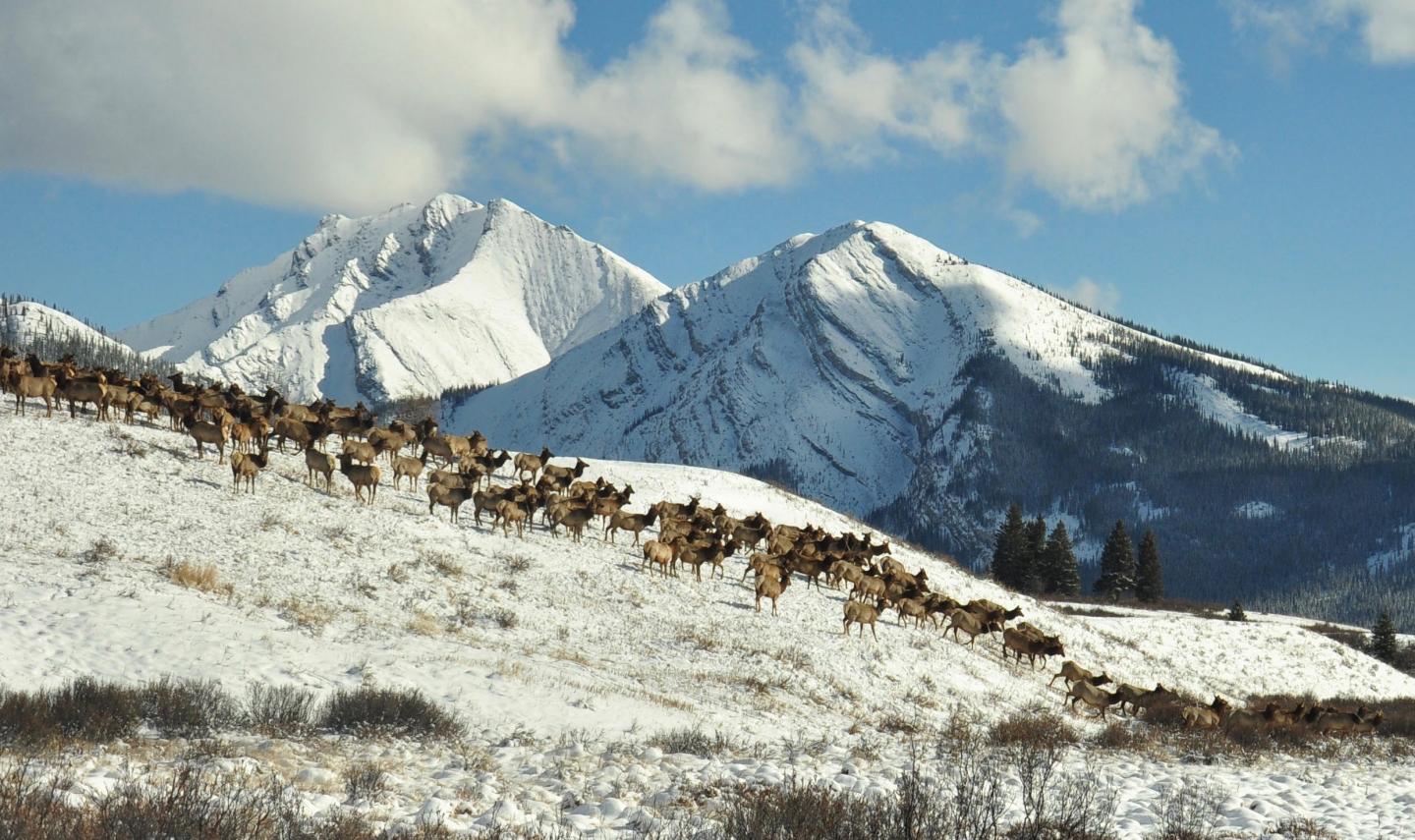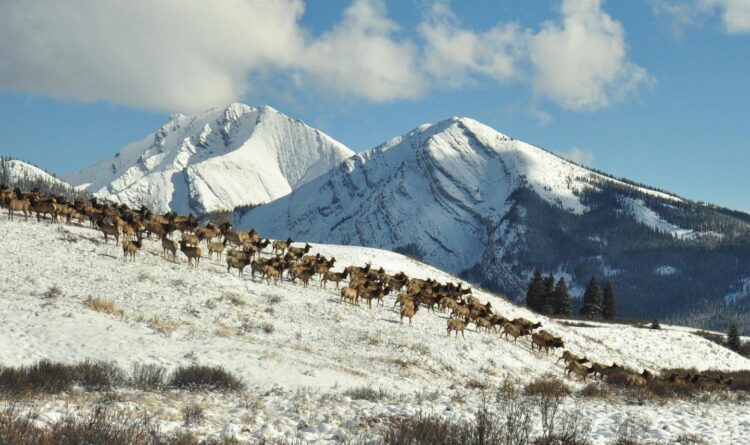
Credit: (Photo courtesy of Celie Intering)
MISSOULA – University of Montana Professor Mark Hebblewhite has joined an international team of 92 scientists and conservationists to create the first-ever global atlas of ungulate (hoofed mammal) migrations.
Working in partnership with the Convention on the Conservation of Migratory Species of Wild Animals, a U.N. treaty, the Global Initiative on Ungulate Migration (GIUM) launches May 7 with the publication of a commentary in Science titled “Mapping out a future for ungulate migrations.”
The atlas provides detailed maps of the seasonal movements of herds worldwide. The maps will help stakeholders like governments, Indigenous peoples, communities, planners and wildlife managers identify current and future threats to migrations and create conservation measures to sustain them.
“A global migration atlas is urgently needed because there has never been a worldwide inventory of these phenomenal seasonal movements,” said lead author Matthew Kauffman, a wildlife biologist with the U.S. Geological Survey in Wyoming and a former UM post-doctorate researcher. “As landscapes become more difficult to traverse, the maps can help conservationists pinpoint threats, identify stakeholders and work together to find solutions.”
Migratory ungulates include species like Mongolian gazelles and saiga in Asia, wildebeest in the African Serengeti, guanacos in South America, red deer in Europe and many more. More familiar North American species include pronghorn, elk, mule deer and caribou.
Around the globe, these species undertake arduous seasonal journeys to find food, escape harsh conditions and breed – each journey as unique as the individual species. Wherever they’re located, ungulates are an essential part of natural ecosystems. Migrations also contribute to local and regional economies through harvest and tourism, and they are woven into the culture of numerous communities.
But many ungulate migrations are declining or threatened because of human disturbances like roads, fences and other types of development.
Mongolian gazelle migrations, which can cover hundreds of kilometers, are sharply constrained by border fences and new railroads. Over the last few decades, researchers in Kenya’s Kajiado County have witnessed the near collapse of the migrations of wildebeest, zebra and Thompson’s gazelle due to unplanned roads, fences and other infrastructure. In other cases, migrations have been lost even before they have been documented.
“The same sort of problems that ungulates in Montana and North America face like fences, highways and expanding human development are playing out on a global scale in a huge way,” said Hebblewhite, professor of ungulate ecology in UM’s Wildlife Biology Program. “We’re trying to raise awareness at a global level of the issues they face and also that we need new international guidance.”
The new global migration atlas will help decision-makers plan and implement infrastructure projects to mitigate or eliminate their barrier effects and will help decision-makers prioritize which areas along migration routes to conserve.
The effort builds on previous conservation successes made possible by migration mapping. Around the world, actions such as protected-area expansion, road-crossing structures and working-lands conservation initiatives have been catalyzed by tracking the actual migration routes of the herds. The scientists and conservationists involved in the initiative hope that detailed maps of migrations around the world will spark similar conservation actions to sustain wildlife migrations.
To coordinate this large effort, the international team partnered with the U.N. Secretariat of CMS to create the GIUM.
An environmental treaty of the U.N., CMS provides a global platform for the conservation and sustainable use of migratory animals and their habitats. This unique treaty brings countries and wildlife experts together to address the conservation needs of terrestrial, aquatic and avian migratory species and their habitats around the world.
The new global initiative hosted by CMS will use the latest GPS tracking technology, mapping software and data-sharing platforms, combined with local and Indigenous knowledge. The team also will endeavor to map lost migrations and document local and historical knowledge of animal movements.
While the paper offers a global perspective, Hebblewhite said it’s relevant in Montana as a reminder of the importance of coordination of conservation across boundaries -including state, federal and private lands – and even internationally across the Canadian border.
“In some ways, Montana and Wyoming really are leading the world in how to conserve migratory ungulates,” Hebblewhite said. “Montana is already undertaking a lot of conservation work to understand the needs of their migratory ungulates. But even in places like the Greater Yellowstone ecosystem, there’s continued threats and continued risks to losing migrations to expanding human development.
This is a very globally relevant issue that we here in Montana have a lot to offer the rest of the world,” he said. “And that carries a lot of responsibility. It’s not just about preserving ungulates in Montana. If we do that here and lose them in the rest of the world, we’ve failed.”
###
Media Contact
Mark Hebblewhite
[email protected]
Original Source
https:/





